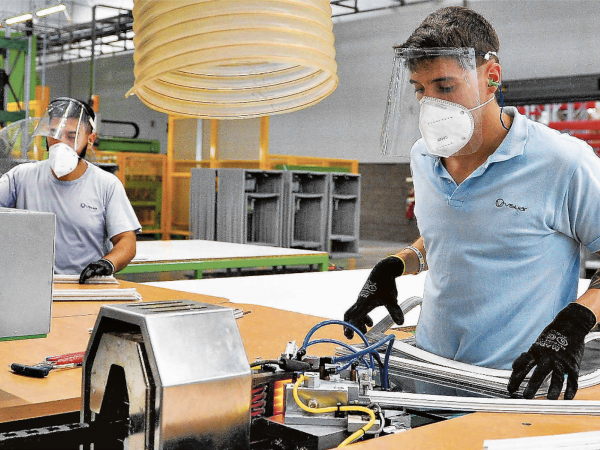Although industry and commerce, two of the main economic indicators, continue to show growth at a good pace, in August both showed single-digit growth, in contrast to the dynamics they achieved during the first half of the year.
(Commerce sales increased 8.1% in the country).
As announced by the National Administrative Department of Statistics (Dane) in its monthly manufacturing production report, in August the production of these activities showed a growth of 9.1% compared to the same month of 2021.
Likewise, industry sales registered an increase of 7.7% in relation to last year, while in employed personnel, jobs increased 4.3%.
Of the 39 industrial activities represented by the survey, 33 of these registered positive variations in their real production and it was the manufacture of motor vehicles, with an annual increase of 57.1%, followed by the manufacture of parts and auto parts, which increased by 32.9% its production.
Other industrial sectors that stood out during August for their performance were printing activities (32.1%); the manufacture of glass products (27.8%) and the manufacture of clothing (30.7%).
Likewise, the Dane monthly manufacturing survey also revealed that in August 2022 it was the industries of Risaralda that showed the greatest dynamics in relation to August 2021, with an increase in their production of 23.6%, followed by Córdoba (22.2%) and by Atlántico (17.2%).
(In the first semester, industry grew 17.3%, and commerce 18.2%).
The Dane also delivered on Friday the Industrial Production Index (IPI) for August, which presented an annual variation of 7.1%.
The four sectors that make up the IPI showed positive variations. In the manufacturing industry, it presented a variation of 9.1%; in electricity and gas supply of 4.7%; for the exploitation of mines and quarries it was 2.7% and for water collection, treatment and distribution the increase was 1.0%.
Sales in the trade.
Archive THE TIME
The Dane also delivered the report of the monthly trade survey, which showed that retail sales increased 8.1% in August compared to its benchmark for 2021.
Likewise, employed personnel grew 3.6% in relation to the same month of 2021. Excluding the fuel trade, the variation in real sales in the sector was 7.9%.
Of the 17 groups of merchandise that the Dane takes for the retail trade survey, sales of books, stationery, newspapers and magazines were the ones that increased the most compared to August 2021, with a variation of 26.2%. These are followed by sales of other motor vehicles and motorcycles (18.9%), alcoholic beverages, cigarettes and tobacco products (18.3%) and non-alcoholic beverages (18%).
“Both retail sales and industrial production continue to expand at high rates compared to what we had a year ago, however, with some moderations if we compare them with previous months”, highlighted Jackeline Piraján, economist at Scotiabank Colpatria.
The economist mentions that despite the fact that in monthly terms the manufacturing activity grew “a little more than 1%”, the forward perspectives of both industrialists and businessmen “show weakness towards the future.” This, according to the analyst, is related to high interest rates, a slightly more moderate demand outlook and also the possibility that higher tax rates will have to be saved next year given the tax reform.
“Consumers on the margin are having a lower purchasing capacity at a general level and this would be moderating our consumption outlook towards the end of next year and also throughout 2023”, Piraján assured in this regard.
Business confidence fell
The Dane presented the results of the Business Pulse survey for September, in which a slight decline was seen in the confidence indicator. This stood at 58.5% in September, below the figure registered in August (60.3%) by 1.8 percentage points.
It is worth remembering that according to the Dane criteria, figures above 50% are in a scenario of optimism.
Within the business sectors, confidence stood at 58.5%, in construction it was 49.5%, in commerce 58.2% and in the services branch 60.3%.
Laura Lucia Becerra Elejalde
BRIEFCASE














